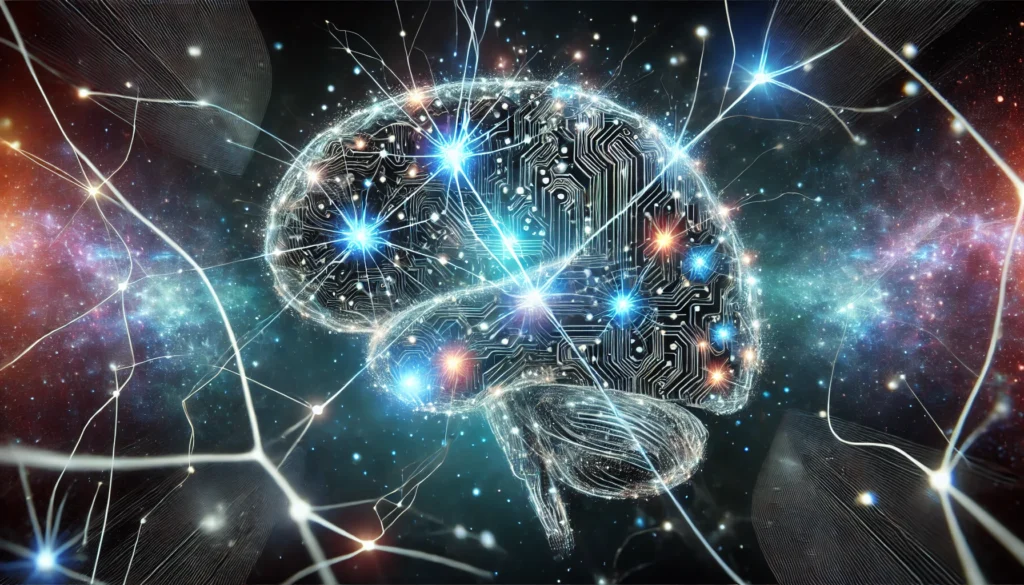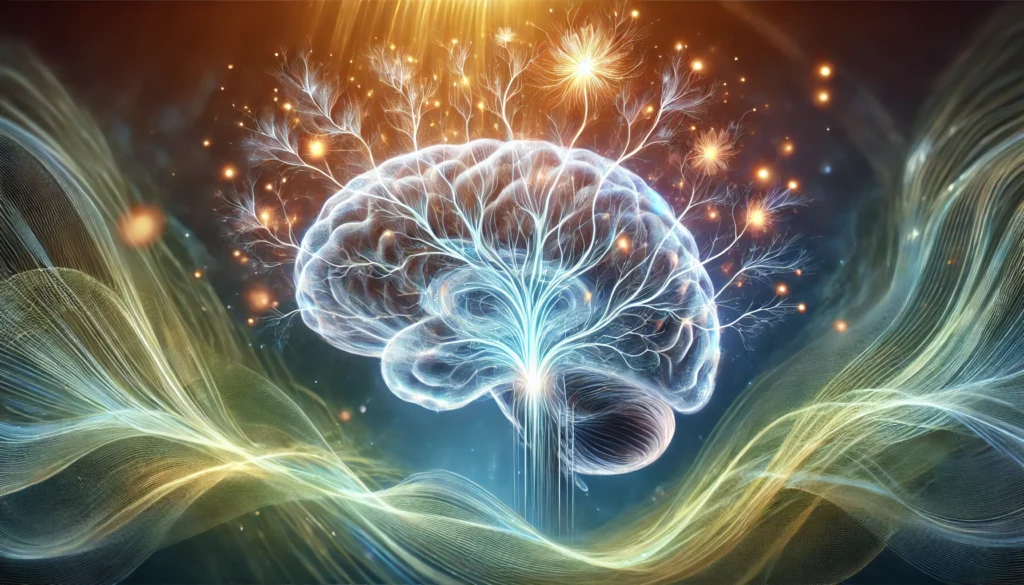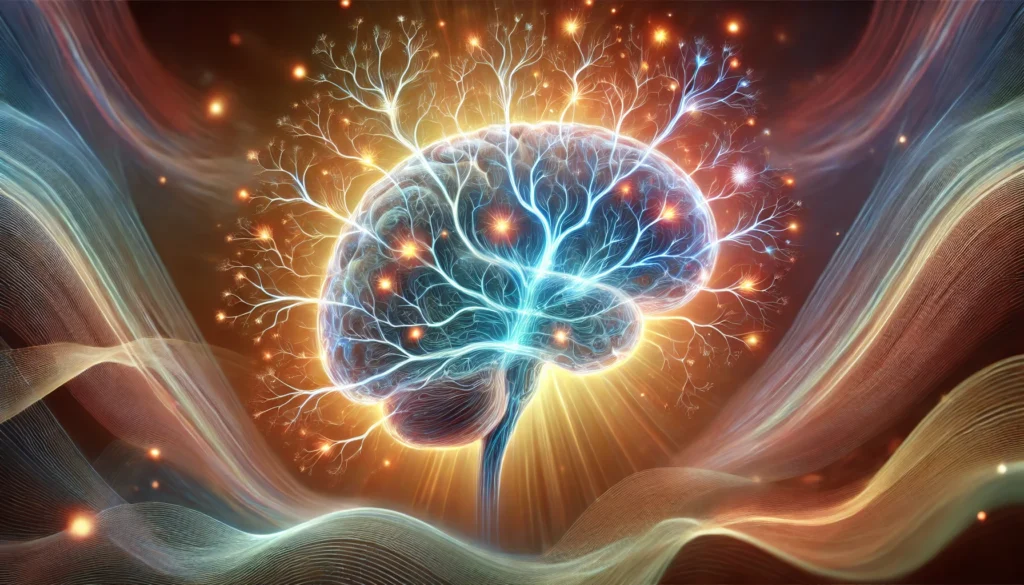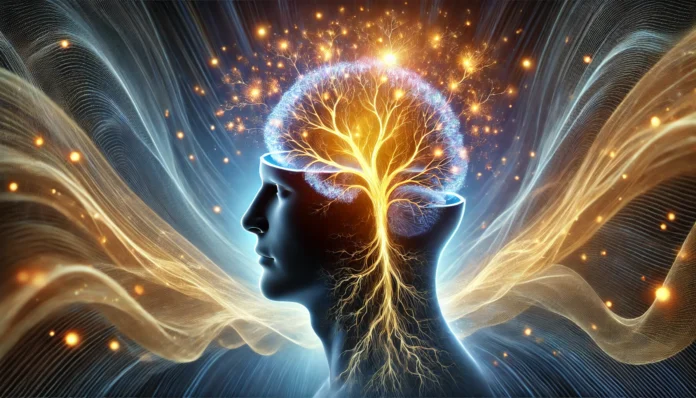The human brain is a remarkably complex organ, responsible for regulating bodily functions, processing thoughts and emotions, and enabling consciousness. For centuries, scientists believed that brain damage was largely irreversible, leading to permanent cognitive and physical impairments. However, modern neuroscience has unveiled a far more hopeful reality: the brain possesses an extraordinary ability to heal itself through neuroplasticity. This ability allows for adaptation, reorganization, and even recovery following injury or illness. The discovery of neuroplasticity has revolutionized our understanding of brain health and opened new avenues for treatments aimed at repairing damaged brain cells.
You may also like : Best Things for Brain Health: Expert-Backed Strategies to Keep Your Mind Sharp
Understanding Neuroplasticity: The Brain’s Adaptive Power
Neuroplasticity refers to the brain’s capacity to change its structure and function in response to experience, learning, or damage. This ability is driven by the brain’s neurons, which can form new connections, strengthen existing pathways, and even reassign functions to different regions when necessary. Previously, it was believed that neuroplasticity only occurred during early childhood, but research has demonstrated that the brain retains its adaptive capabilities throughout life. This has profound implications for brain recovery and cognitive enhancement, offering hope for individuals suffering from neurological disorders, brain injuries, and age-related cognitive decline.
There are two primary types of neuroplasticity: structural and functional. Structural plasticity involves the physical changes in the brain’s structure, such as the growth of new neurons and the strengthening of synaptic connections. Functional plasticity, on the other hand, refers to the brain’s ability to rewire itself and allocate tasks to undamaged areas in response to injury. This adaptability is critical for recovery from brain trauma, as it enables other parts of the brain to compensate for lost function.
Can Brain Damage Be Reversed? The Role of Regeneration and Repair
The question of whether brain damage can be reversed has intrigued neuroscientists for decades. While the extent of recovery varies depending on the severity and location of the damage, research indicates that, under certain conditions, the brain can indeed repair itself. The process of brain recovery depends on multiple factors, including the age of the individual, the nature of the injury, and the interventions employed to support healing.
One key factor in brain recovery is neurogenesis, the process by which new neurons are generated. Although once believed to be impossible in adults, studies have confirmed that neurogenesis occurs in specific regions of the brain, particularly the hippocampus, which is critical for memory and learning. This discovery has led to extensive research on how to stimulate neurogenesis through lifestyle modifications, pharmacological interventions, and cognitive training.
Additionally, the brain employs mechanisms such as synaptic pruning and myelination to optimize function. Synaptic pruning removes weak or unnecessary neural connections, allowing the brain to become more efficient. Myelination, the process of coating nerve fibers with a protective sheath, enhances the speed and efficiency of neural communication. These processes contribute to the brain’s ability to reorganize and recover from damage, further supporting the notion that brain healing is possible under the right circumstances.

Does the Brain Heal Itself After Injury?
The capacity for brain healing following injury is a subject of intense scientific investigation. The degree to which the brain can recover depends on the type of injury sustained. Traumatic brain injuries (TBIs), strokes, and neurodegenerative diseases all impact the brain differently, necessitating distinct approaches to treatment and recovery.
In cases of mild to moderate brain injury, such as concussions, the brain can often repair itself through natural healing processes. Inflammation subsides, damaged neurons attempt to reconnect, and compensatory mechanisms kick in to restore function. However, severe brain injuries may require medical intervention, such as rehabilitation therapies, medications, or even surgical procedures to facilitate recovery.
For stroke patients, neuroplasticity plays a vital role in regaining lost abilities. Many stroke survivors experience improvements in motor and cognitive functions through rehabilitation exercises that encourage the brain to form new pathways. Similarly, individuals recovering from TBIs can benefit from structured therapies that promote rewiring and functional recovery. This underscores the importance of targeted interventions in harnessing the brain’s inherent ability to heal itself.
How to Repair Damaged Brain Cells: Strategies for Recovery
The potential for brain repair can be maximized through a combination of lifestyle choices, therapeutic interventions, and cutting-edge medical treatments. Research has identified several key strategies that support brain healing and enhance cognitive function.
- Nutrition and Brain Health: The brain requires essential nutrients to support neurogenesis and synaptic plasticity. Diets rich in antioxidants, healthy fats, and essential vitamins play a crucial role in brain repair. Omega-3 fatty acids, found in fish and nuts, promote cell membrane integrity and support neural function. Additionally, foods high in flavonoids, such as berries and dark chocolate, protect against oxidative stress and inflammation, both of which can hinder brain recovery.
- Physical Exercise and Neurogenesis: Engaging in regular physical activity has been shown to stimulate neurogenesis and improve cognitive function. Aerobic exercises, such as running, swimming, and cycling, increase blood flow to the brain, delivering oxygen and nutrients essential for neuronal growth. Exercise also triggers the release of brain-derived neurotrophic factor (BDNF), a protein that enhances synaptic plasticity and supports neural survival.
- Cognitive Training and Mental Stimulation: Just as physical exercise strengthens muscles, mental exercise fortifies the brain. Activities such as puzzles, reading, learning new skills, and playing musical instruments stimulate neural circuits and encourage synaptic growth. Cognitive training programs have been developed to enhance memory, problem-solving abilities, and overall brain function, demonstrating that mental stimulation is a powerful tool for brain recovery.
- Sleep and Brain Repair: Sleep is an essential component of brain healing. During deep sleep, the brain undergoes repair and maintenance, clearing out toxins and strengthening neural connections. Studies have shown that sleep deprivation impairs cognitive function and hinders the brain’s ability to recover from injury. Prioritizing quality sleep through proper sleep hygiene can significantly enhance brain health and support neuroplasticity.
- Stress Management and Neuroplasticity: Chronic stress negatively impacts brain health, leading to neuronal damage and cognitive decline. Practices such as meditation, mindfulness, and deep breathing exercises have been shown to reduce stress levels and promote neuroplasticity. By managing stress effectively, individuals can create an optimal environment for brain recovery and cognitive resilience.
Is Brain Damage Reversible? The Future of Neuroscientific Research
Advancements in neuroscience continue to push the boundaries of what is possible in brain recovery. Emerging therapies, such as stem cell treatments, neurostimulation, and gene therapy, hold great promise for reversing brain damage and restoring lost functions. Researchers are also exploring the potential of pharmacological interventions that enhance neuroplasticity, offering new hope for individuals with neurological disorders.
One particularly exciting area of research is brain-computer interfaces (BCIs), which enable direct communication between the brain and external devices. BCIs have been used to restore movement in paralyzed individuals and assist stroke patients in regaining motor function. As technology advances, the possibilities for harnessing neuroplasticity in innovative ways will continue to expand.

Frequently Asked Questions (FAQ) on Brain Healing and Neuroplasticity
1. Can the brain heal itself completely after an injury?
The ability of the brain to heal itself depends on the severity and type of injury. While mild injuries, such as concussions, may see near-complete recovery, more severe brain damage may require extensive rehabilitation. The brain’s neuroplasticity allows for functional compensation, where undamaged areas take over tasks previously managed by damaged regions. However, this process is not instantaneous and often requires targeted therapies, cognitive training, and lifestyle adjustments to maximize recovery. While the brain may not always fully regenerate lost neurons, it can reorganize its pathways to restore functionality.
2. Can brain damage be reversed with medical intervention?
Reversing brain damage depends on multiple factors, including the type of injury and the timing of treatment. For example, stroke patients often benefit from immediate medical intervention, which can prevent further neuronal loss and promote recovery. Regenerative medicine, including stem cell therapy, is being explored as a potential treatment to restore lost brain cells. Additionally, neurostimulation techniques, such as transcranial magnetic stimulation (TMS), are showing promise in enhancing neuroplasticity and aiding in rehabilitation. While complete reversal of brain damage may not always be possible, significant functional improvements can be achieved with the right approach.
3. Does the brain heal itself naturally without intervention?
The brain has a remarkable ability to repair itself, but the extent of natural healing varies. Following an injury, the brain initiates inflammatory and repair processes to mitigate damage. Over time, neuroplasticity allows for some level of functional adaptation. However, without external stimulation, such as cognitive therapy, physical exercise, and proper nutrition, the brain’s self-healing may be limited. Engaging in activities that support brain health can significantly enhance the natural repair mechanisms and improve long-term cognitive function.
4. How long does it take for the brain to heal from damage?
The timeline for brain healing varies widely depending on the type and severity of damage. Minor injuries, such as mild concussions, may heal within weeks to months, while more severe brain damage can take years to recover. The first six months after an injury are typically the most crucial, as this is when neuroplasticity is most active. However, even years after an injury, continued rehabilitation can lead to further improvements. Consistency in therapy, along with a brain-supportive lifestyle, can accelerate the healing process and optimize recovery.
5. Is brain damage reversible through lifestyle changes?
Although brain damage may not always be fully reversible, lifestyle changes can significantly enhance the brain’s healing capabilities. Nutrition plays a vital role in brain repair, with omega-3 fatty acids, antioxidants, and B vitamins supporting neuronal health. Regular physical exercise boosts neurogenesis and increases blood flow to the brain, while cognitive activities help strengthen neural connections. Sleep and stress management are also essential, as chronic stress and sleep deprivation can hinder the brain’s ability to repair itself. Implementing these changes consistently can lead to substantial cognitive improvements over time.
6. Can the brain repair itself after a stroke?
Stroke recovery is one of the most well-researched areas of brain healing. Neuroplasticity plays a significant role in stroke rehabilitation, allowing other areas of the brain to take over lost functions. Early intervention with physical therapy, speech therapy, and cognitive training can dramatically improve outcomes. Some stroke survivors regain mobility and speech through intensive rehabilitation, even years after the event. Emerging therapies, such as brain-computer interfaces and neurostimulation, are further enhancing the potential for stroke recovery.
7. How to repair damaged brain cells naturally?
While neurons have limited ability to regenerate, certain practices can enhance brain cell repair and overall function. Engaging in mentally stimulating activities, such as learning new skills or playing musical instruments, promotes neuroplasticity. Antioxidant-rich foods, such as berries and green leafy vegetables, help protect neurons from oxidative stress. Regular physical activity increases brain-derived neurotrophic factor (BDNF), which supports neuronal survival and growth. Additionally, mindfulness practices and stress reduction techniques create an optimal environment for brain repair. A holistic approach combining these elements can support long-term brain health and recovery.
8. Can the brain heal from damage caused by aging?
While aging naturally leads to some cognitive decline, research shows that the brain retains its ability to adapt and repair itself. Engaging in lifelong learning, social interactions, and regular exercise can help slow age-related cognitive decline. Nutrition also plays a crucial role, with diets rich in healthy fats and antioxidants supporting brain longevity. Sleep is another key factor, as deep sleep aids in clearing waste products from the brain and promoting cellular repair. While aging cannot be reversed, proactive measures can help maintain cognitive function and brain resilience.
9. Does the brain repair itself differently depending on the type of injury?
Yes, the mechanisms of brain repair vary depending on the nature of the injury. Traumatic brain injuries (TBIs) often require physical and cognitive rehabilitation to regain lost functions. Stroke recovery primarily depends on neuroplasticity and blood vessel regeneration. Neurodegenerative diseases, such as Alzheimer’s, involve progressive neuronal loss, making early intervention and lifestyle modifications critical. Mental health conditions, such as depression, can also impact brain structure, but therapies like cognitive behavioral therapy (CBT) and medication can support neuroplasticity. Understanding the specific type of injury allows for more targeted recovery strategies.
10. Can the brain recover from brain damage even years later?
Many individuals continue to experience improvements in brain function long after an initial injury. Research has shown that neuroplasticity remains active well into adulthood, allowing for ongoing cognitive enhancement. Long-term rehabilitation programs, combined with brain-supportive habits, can lead to gradual recovery over time. Some therapies, such as music therapy and adaptive technologies, have been particularly effective in restoring lost abilities in individuals with chronic brain injuries. While the rate of recovery may slow with time, persistence and innovation in treatment approaches can continue to yield positive results even years after brain damage occurs.

Conclusion: Unlocking the Brain’s Healing Potential
The notion that the brain can heal itself is no longer a mere hypothesis but a scientifically supported reality. Neuroplasticity has revolutionized our understanding of brain health, demonstrating that the brain can adapt, reorganize, and recover from damage. While the extent of recovery depends on various factors, proactive steps such as proper nutrition, exercise, cognitive stimulation, and stress management can significantly enhance brain healing. As research in neuroscience progresses, the future holds even greater potential for unlocking the brain’s self-repair mechanisms, offering hope for those affected by neurological conditions and brain injuries. The human brain’s ability to heal itself is a testament to its resilience, adaptability, and remarkable complexity.
brain recovery techniques, neuroregeneration strategies, cognitive function restoration, brain injury rehabilitation, neural repair methods, improving brain resilience, neurogenesis support, mental clarity enhancement, stroke recovery exercises, traumatic brain injury therapy, boosting brain adaptability, reversing cognitive decline, brain health optimization, rewiring neural pathways, neurological healing approaches, enhancing cognitive plasticity, memory recovery strategies, repairing neural damage, holistic brain healing, brain function improvement
Further Reading:
Brain’s Self-Healing Power: Stroke Recovery Explored
Disclaimer
The information contained in this article is provided for general informational purposes only and is not intended to serve as medical, legal, or professional advice. While Health11News strives to present accurate, up-to-date, and reliable content, no warranty or guarantee, expressed or implied, is made regarding the completeness, accuracy, or adequacy of the information provided. Readers are strongly advised to seek the guidance of a qualified healthcare provider or other relevant professionals before acting on any information contained in this article. Health11News, its authors, editors, and contributors expressly disclaim any liability for any damages, losses, or consequences arising directly or indirectly from the use, interpretation, or reliance on any information presented herein. The views and opinions expressed in this article are those of the author(s) and do not necessarily reflect the official policies or positions of Health11News.


